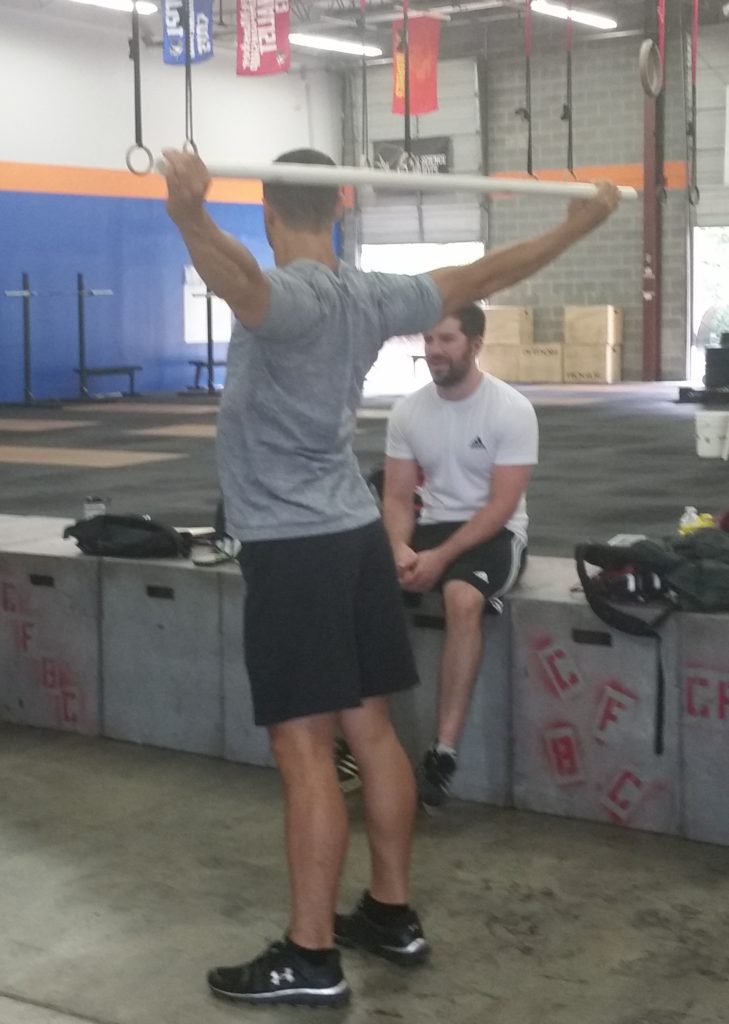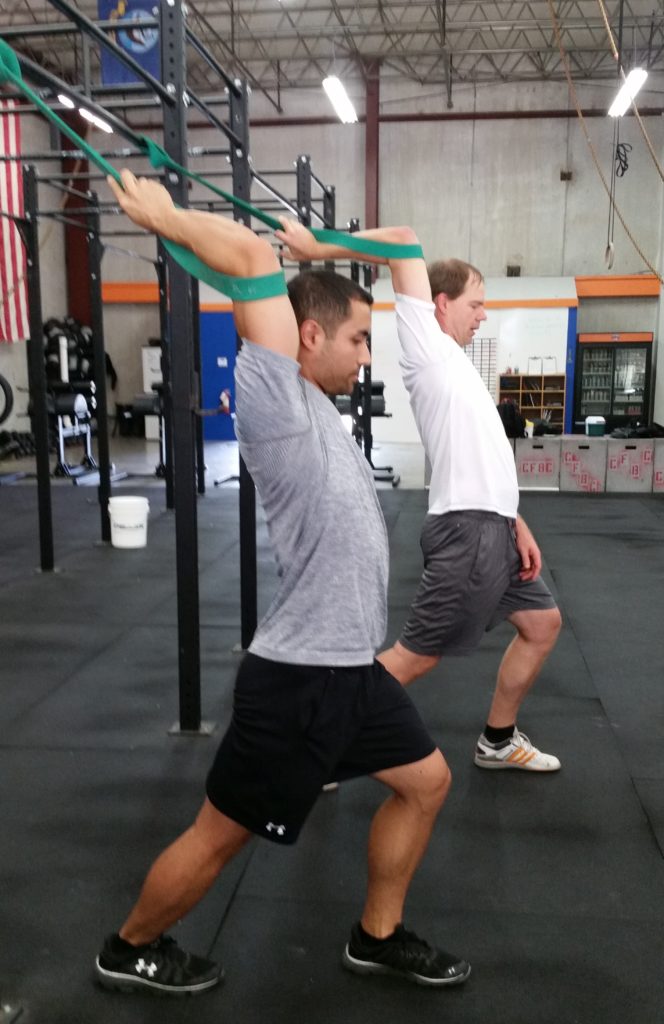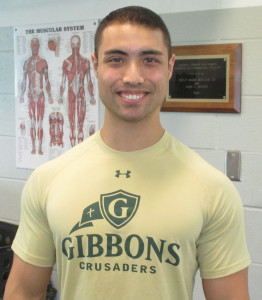
The snatch exercise in weightlifting is where the bar is pulled from the floor to an position overhead with elbows locked in one continuous movement. This might seem simple, but it is a very technical movement that creates the more power than any other exercise! The exercise requires the athlete to pull the weight high enough to allow him/her to squat under it and lock out the elbows. Learning how to do the snatch benefits not only strength and speed but also flexibility, coordination, foot speed, balance, and timing. The entire body and every muscle is working together during this dynamic execution. A wide range of athletes can benefit from this exercise: basketball, football, sprinters, and many other sports requiring explosive activity.
What I want to discuss are the exercises to prepare for the snatch, and how to execute it with proper technique. There are a few key components to concentrate on, but first I’d like to reference what was talked out in the last blog by Coach Amer. Flexibility is so important to execute the snatch without injuring yourself. One wrong move and you could seriously injure yourself, the most common being straining the back. Without flexibility, this exercise cannot be completed correctly.
Without shoulder flexibility, the athlete cannot properly lock out the arms. The first way to combat this lack of mobility is to take a stick or towel, hold it overhead with your arms locked, wide grip, and rotate it back and forth until you feel your shoulders start loosening up. Then slowly bring your grip a bit closer and keep rocking it back and forth. The goal is to be able hold a bar, with wide grip, overhead, aligned with the spine, and arms should be lined up with the ears. Think about drawing a line up from the back of your skull to the bar; that’s where you want it.

A second way to increase shoulder flexibility is to take a long band, wrap it around the elbow and attach the other end to the top of a pull up bar. Next, face away from the bar and with the arm over head and locked out, begin to pull. The band is going to add resistance to the stretch, which is actually a much better way to increase flexibility much faster. Perform this for about 10-20 seconds per arm for 2-3 sets. I would recommend doing this everyday as a stretch. It can be performed as a dynamic stretch prior to performing the snatch. If it’s a day away from snatching, perform the stretch for longer holds. In my experience this allowed for quicker shoulder flexibility to perform the snatch.

Another great exercise to take into account is the Romanian Deadlift (RDL). This is a great workout to increase the hamstrings and lower back strength. To perform this, start with the bar on the ground; weight should be light, I would recommend 50% intensity of the clean deadlift. The feet should be flat and positioned shoulder width apart, with shoulders positioned over the bar, and hands in the wide position using the hook grip.
Key points to remember are to keep a flat back, looking forward, and when pulling the weight think triple extension, and pressing the ground through the heels. Now, lift the weight, keeping the back flat, stand up, concentrating on squeezing the glutes and contracting the hamstrings (shortening). The arms will stay locked out and when you stand up, don’t push the hips forward, keep the lower back locked. While doing this, focus on engaging the lats and keeping the bar close to the body. The main purpose is to build the strength in the hamstrings for the initial pull and lower back. It is great for developing a strong posterior chain, which allows for better positions throughout the snatch.
Lastly, I have one last exercise that will help build the upper body strength and stability that is required to help build the standing and receiving positions of the snatch., This is the snatch push press, which can be performed from the rack, starting with the weight behind the head located on the upper back. Position the hands wide, and feet shoulder width apart, using light weight, 50% intensity, and keep the head forward and lower back locked. When pressing the weight up, completely lock out the arms! For an added stretch and workout try squatting with the weight overhead and arms locked. Try keeping the arms in line with the ears as you lower the body. Also, when squatting attempt to lower with the hips aligning parallel to the floor. Be sure to keep the feet flat which will add to strength and ankle mobility. This in my opinion is a great confidence builder for performing the snatch.
There are many other beneficial stretches and lifts that can be applied. These are the main assistance exercises I do and prescribe for my athletes or clients in the power snatch progression. As a coach, it is imperative to practice safety and form during lifts. A coach should be able to identify potential issues and provide solutions for optimal performance. The next time you perform a snatch, record yourself and critique your technique. I hope this blog will help you self-identify some potential areas you can advance your skill of performing the power snatch!
Did you like the ideas presented in this blog? If so, please add a comment below for Coach Cowick. Our team of bloggers would like to get your feedback. When you submit a comment our goal is to re-post it within 24 hours. Thanks!
Personal Trainer at Fitness Connection and Camp Gladiator
“The views, opinions, and judgments expressed in this message are solely those of the authors and peer reviewers. The contents have been reviewed by a team of contributors but not approved by any other outside entity including the Roman Catholic Diocese of Raleigh.”

